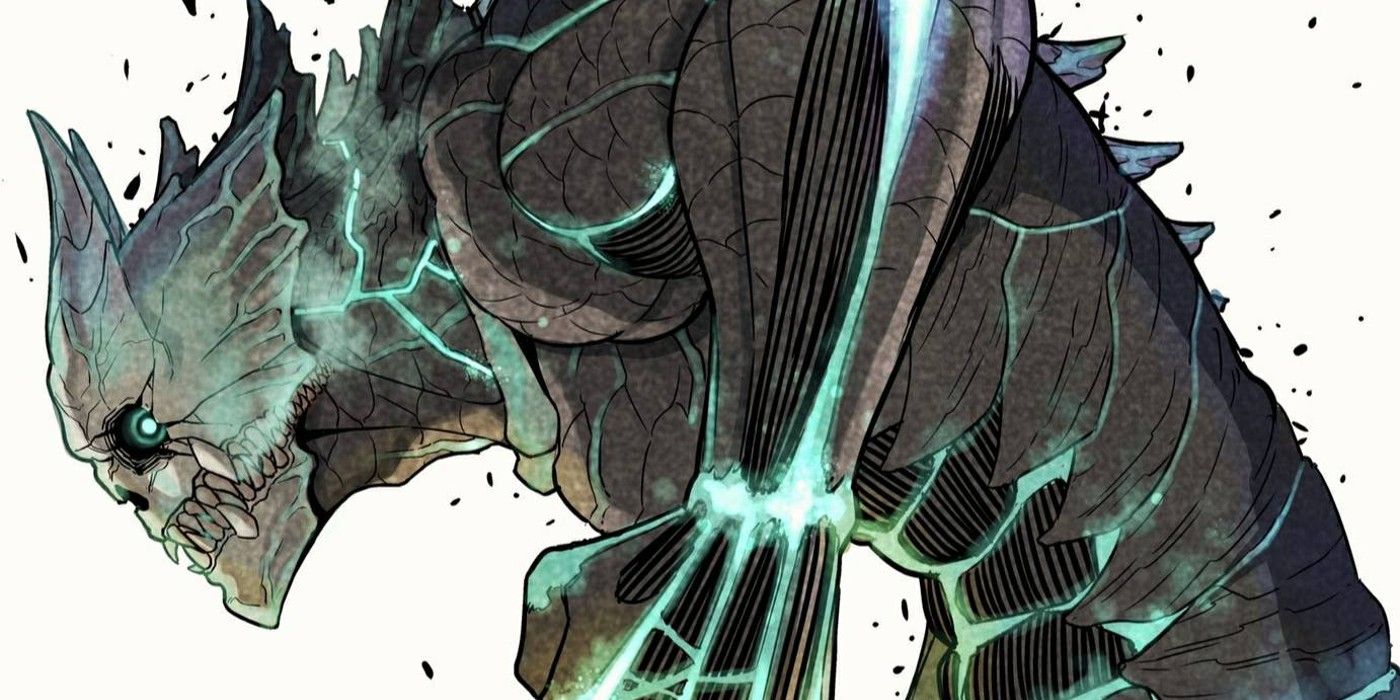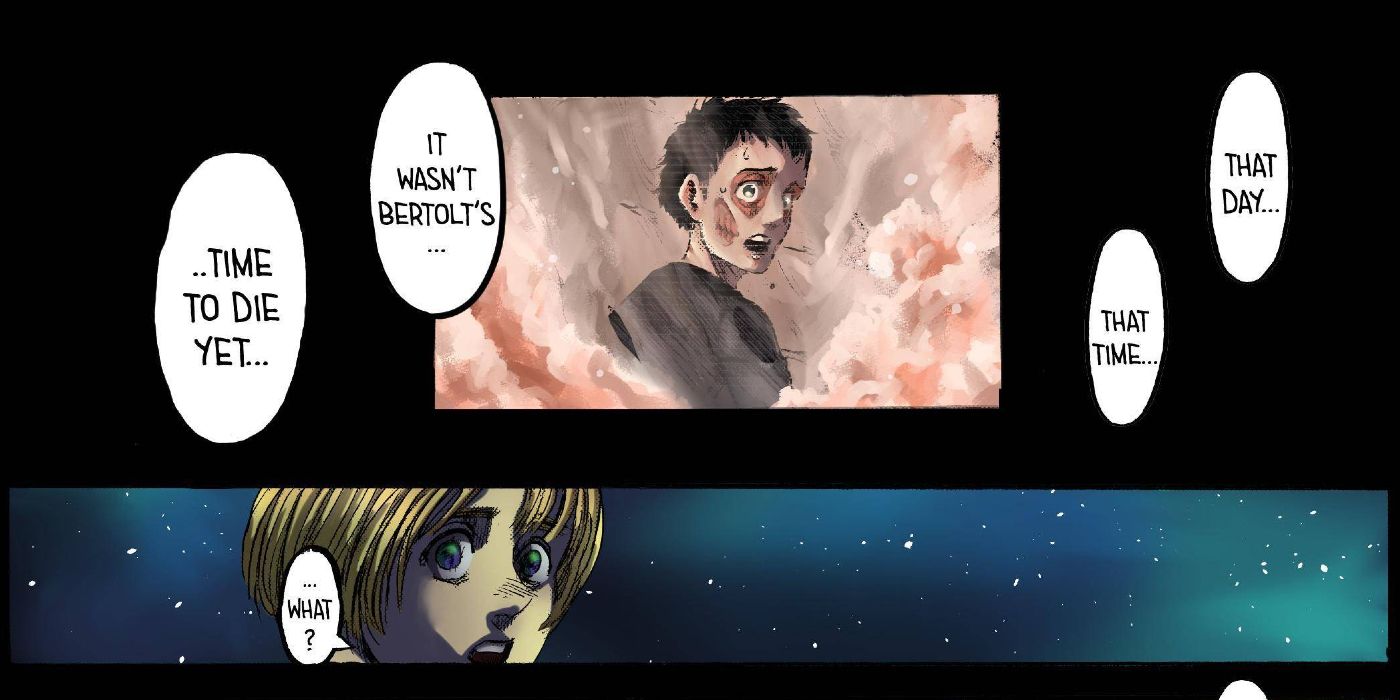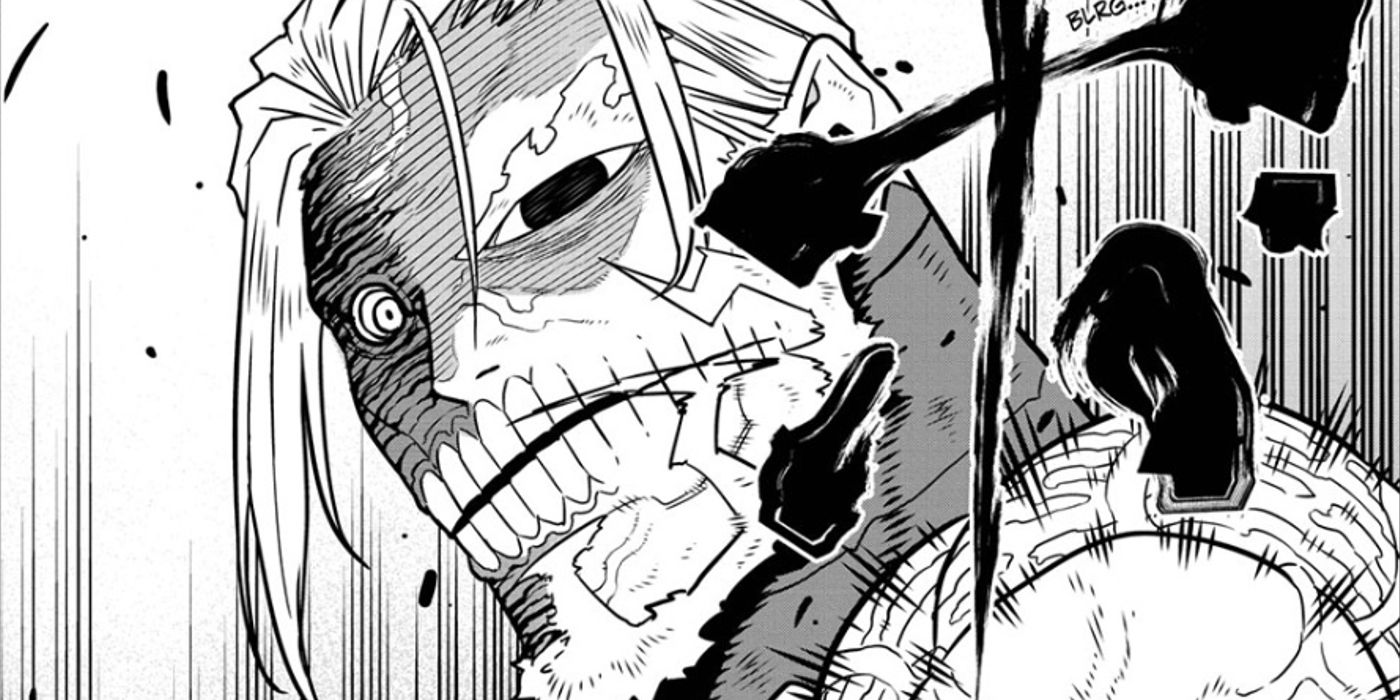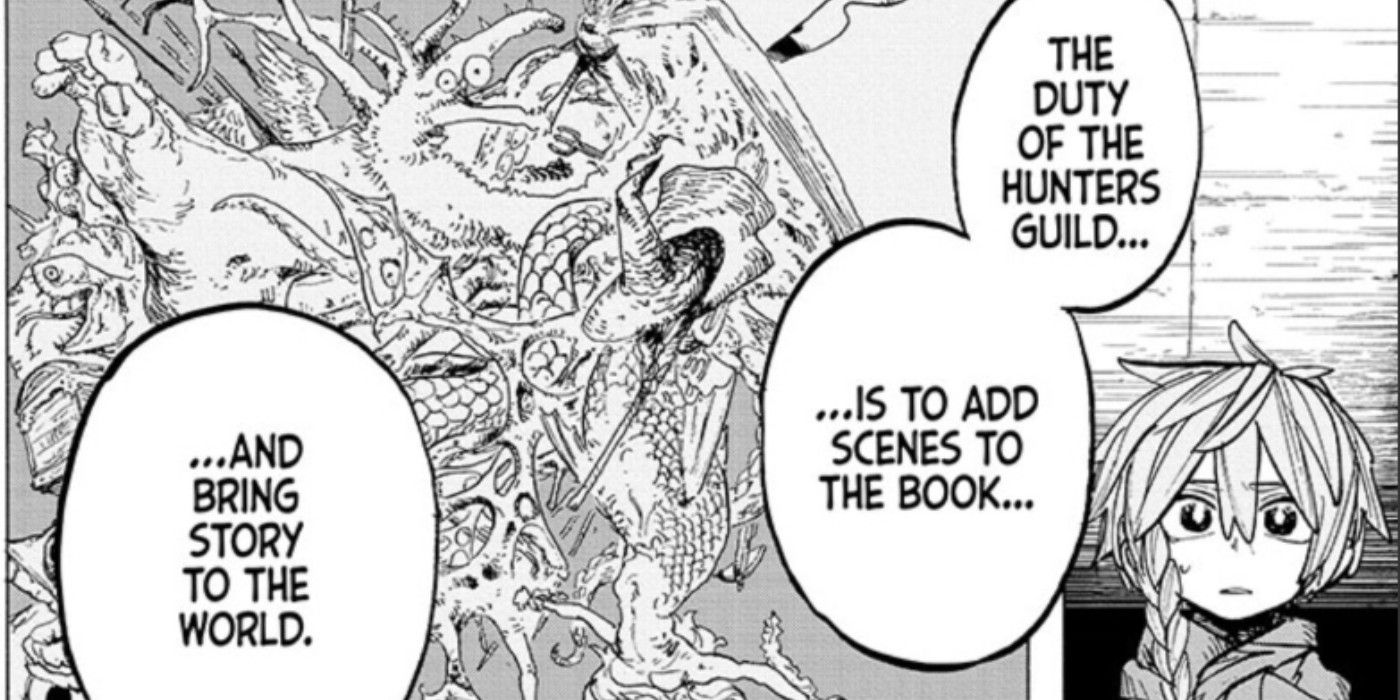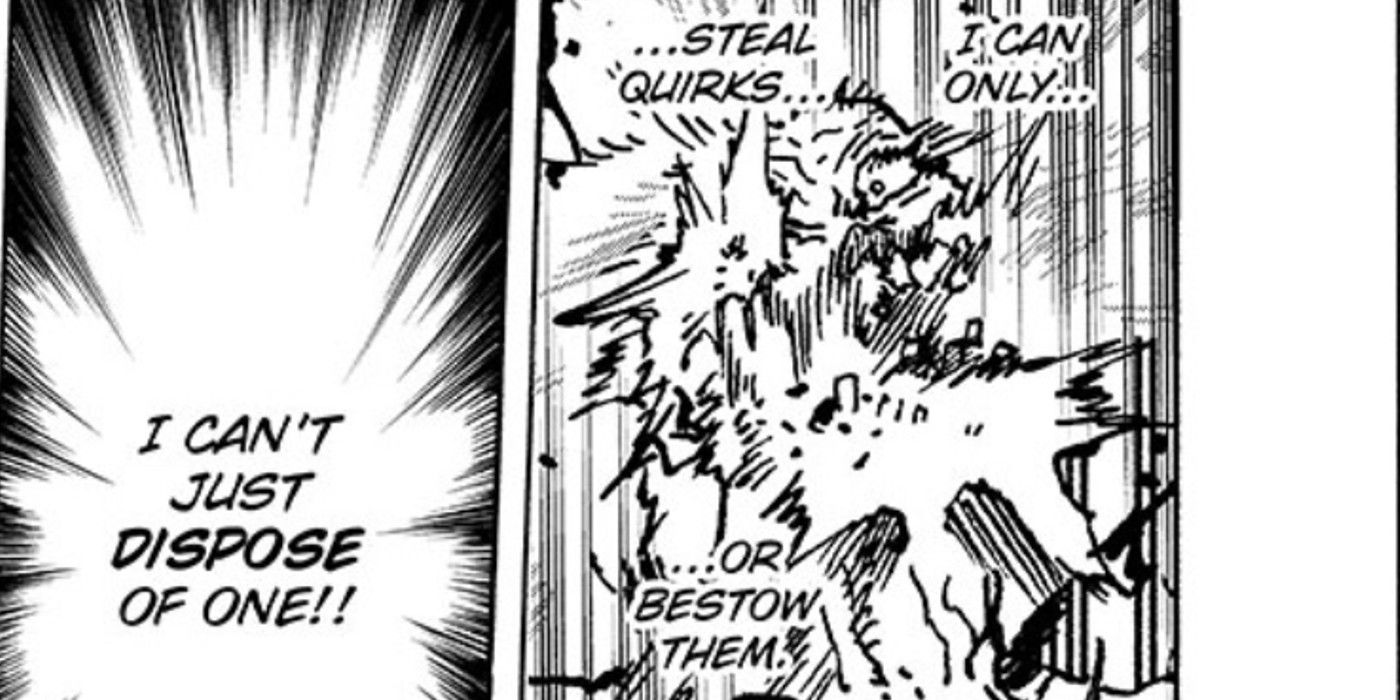Compelling twists are almost synonymous with manga, so even though they're expected, mangaka somehow continue to baffle fans. Although 2021 featured one of the most unexpected developments of all time in Attack on Titan, some of the best twists in today's most popular series ironically occurred in 2020.
For example, Undead Unluck was once inundated with startling turn of events that seemingly happened every other chapter. Readers learned in 2020 that Undead Unluck's universe has apparently been destroyed numerous times by a sadist God who just enjoys watching their creations struggle and that the main character's favorite manga is an actual retelling of what happens in life before God resets everything. Additionally, other manga that provide some of the best plot twists like Chainsaw Man was on hiatus in 2021 while Berserk only published two chapters, the second one being released posthumously. Regardless, here are the best twists of 2021.
Attack on Titan: Eren Yeager's Mother
It's impossible to have a list of unexpected turn of events and not include the shocking revelation from Attack on Titan's final chapter. Mangaka Hajime Isayama is the undisputed king of twists, but even so, fans doubted that he could top when he suddenly portrayed his longtime hero Eren Yeager as a major villain. Yet he later proved that his haymaker lay in wait within the bowels of chapter 139.
When conversing with a young Armin Arlert within the Founding Titan's alternate world known as the Path, a young Eren admits that he used his Founding Titan power to go back in time and send the Smiling Titan after his mother instead of Bertholdt Hoover to ensure a better future. This implied that Eren knowingly fed his mother to the very Titan that spawned a deep-seeded desire within himself for vengeance - when the one who deserved a reckoning more than anyone else was him. In fact, this twist actually contains another twist when readers realize that this realization means that Eren never wanted to sacrifice everyone beyond Paradis Island so that he and everyone else could live a better life. Eren Yeager made himself the villain to help unite the world against him, making him an antihero.
Kaiju No. 8: An Unexpected Death
It's appropriate that Kaiju No. 8 appears on this list since has many similarities to Attack on Titan. It basically reimagines the portion of Attack on Titan when Titans were assumed to be a separate species and not a particular race of humans who have the power to transform into them. But rather than having Titans, humanity in Kaiju No. 8 is plagued by monstrous kaiju that only the main character, Kafka Hibino, can transform into, similarly to how Attack on Titan originally created the false impression that only Eren Yeager could become a Titan.
Although similar, Kaiju No. 8's mangaka Naoya Matsumoto has been actively introducing additional elements to Attack on Titan's original story probably to make up for the fact that there won't be a Marley and Eldia conflict. One of them is that Kaiju No. 8's equivalent to Mikasa Ackerman, Kikoru Shinomiya, has a father who also played a major role in Kafka's trial once he was discovered to be a kaiju (much like Eren who underwent a similar tribunal). As readers got to know Kikoru's father, Kaiju No. 8, in a stunning twist, had a powerful kaiju not only kill him but assume control of his corpse in chapter 52.
The Hunters Guild: Red Hood: They're Literally Living In A Story
The premature cancellation of The Hunters Guild: Red Hood by Yuki Kawaguchi is probably the most egregious of Shonen Jump's now large pile of axed manga due to poor sales. What somehow failed to catch reader attention was how Kawaguchi masterfully defied the popular trope where a character is born without a special power, but that power either later awakens, is given to them or they find an alternative. The Hunters Guild's Velou fits none of these categories, though, he does to some extent in the big twist that transpires in the final installments of the 19-chapter series.
Essentially, Kawaguchi's world has its own Death Note where everything that's written within its pages comes to pass. The eponymous Hunters Guild's main purpose, therefore, isn't just to hunt monsters as was originally believed but to protect and write within the powerful artifact's pages to prevent the world from ending. Additionally, a man who was originally just Velou's mayor not only turns out to be a hunter who came to view the guild's use of the book as immoral but stole pages from this magical tome to create Velou and gave him a power that allows him to unravel the fabric of their world just by existing.
Look Back: Even Fantasies Can Hurt
Mangaka Tatsuki Fujimoto demonstrated that a manga as ridiculously gory and over-the-top as Chainsaw Man can simultaneously be deep and provide a wealth of possible readings through masterfully rendered ambiguity. He soon began exploring the latter dynamic in a separate and standalone one-shot called Look Back without all the absurdities of and the gratuitous amount of violence in Chainsaw Man. Look Back is not only completely different from his more popular work, but the twist therein is deeply profound.
The twist itself is a sudden and random act of rather intense violence perpetrated against a young man named Kyomoto when, up until that moment, the story focused on the relationship between two mangaka, him and Fujino, and the dichotomy of friendship and jealousy. The twist allowed Look Back's Fujimoto to explore the tragedy of how someone facing the death of a loved one can assume all the blame by not only conflating their own actions as being the direct cause of their death, but by coming to the conclusion that the deceased person would never have died had they never met. Fujino does this by creating an alternate reality or fantasy world where she doesn't meet Kyomoto, which she views as being synonymous with giving up on one's dream as a mangaka. It also represents Fujino's own insecurities of her own talents because Kyomoto still becomes famous while she doesn't despite the fact that, in real life, she played a monumental role in Kyomoto even becoming an artist. So even though Fujino eventually saves Kyomoto in her fantasy even though they don't know each other and decides to take another stab at her dream with him , she's still emotionally wounded despite this being her own fantasy. In both worlds, she suffers. Fujino is either alone now in the real world because Kyomoto is dead, or she never gets to experience the wonderful moments she shared with Kyomoto growing up as mangaka in her fantasy.
My Hero Academia: New Order and the Destruction of Quirks
Many fans probably think that this year's best twist was the traitor debacle, not just because the prospect of a traitor was shocking but because mangaka Kohei Horikoshi fooled everyone into believing that it was Invisible Girl, when, in actuality, Yuga Aoyama betrayed his friends. But both of them are just minor supporting characters in My Hero Academia and forgettable. No, a much larger twist involved the number-one American hero Star and Stripe and her terrifying quirk.
Star and Stripe originally created the false impression that her New Order quirk could only change the rules of two objects simultaneously when in actuality it was three. Not only that, but she actually imposed a third reality in secret before her battle with All For One, so that if the villain stole New Order, it would cause the other quirks inside of him to revolt. Even though this was a massive twist in and of itself, it also altered readers' (and All For One's) understanding of how quirks work in chapter 333. Before then, quirks couldn't be destroyed, but now they can - and that's a huge gamechanger.

